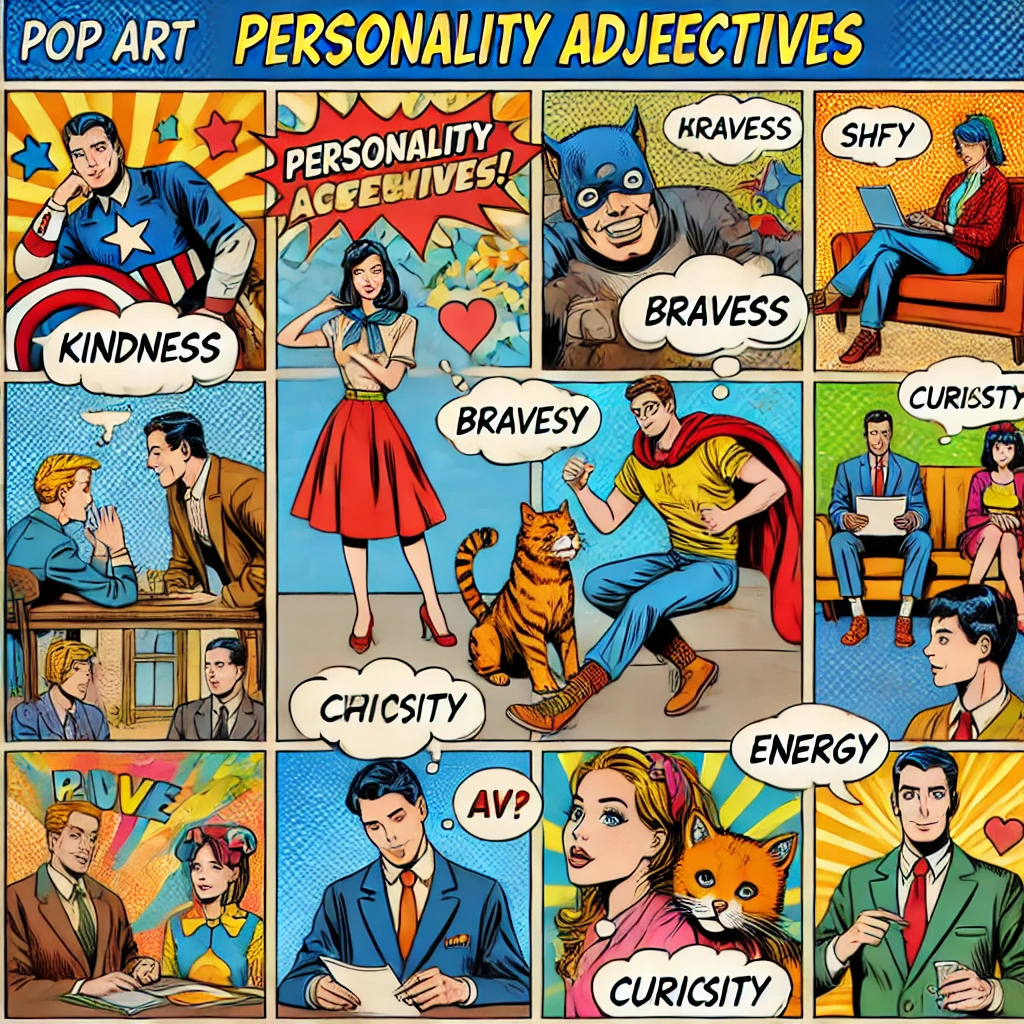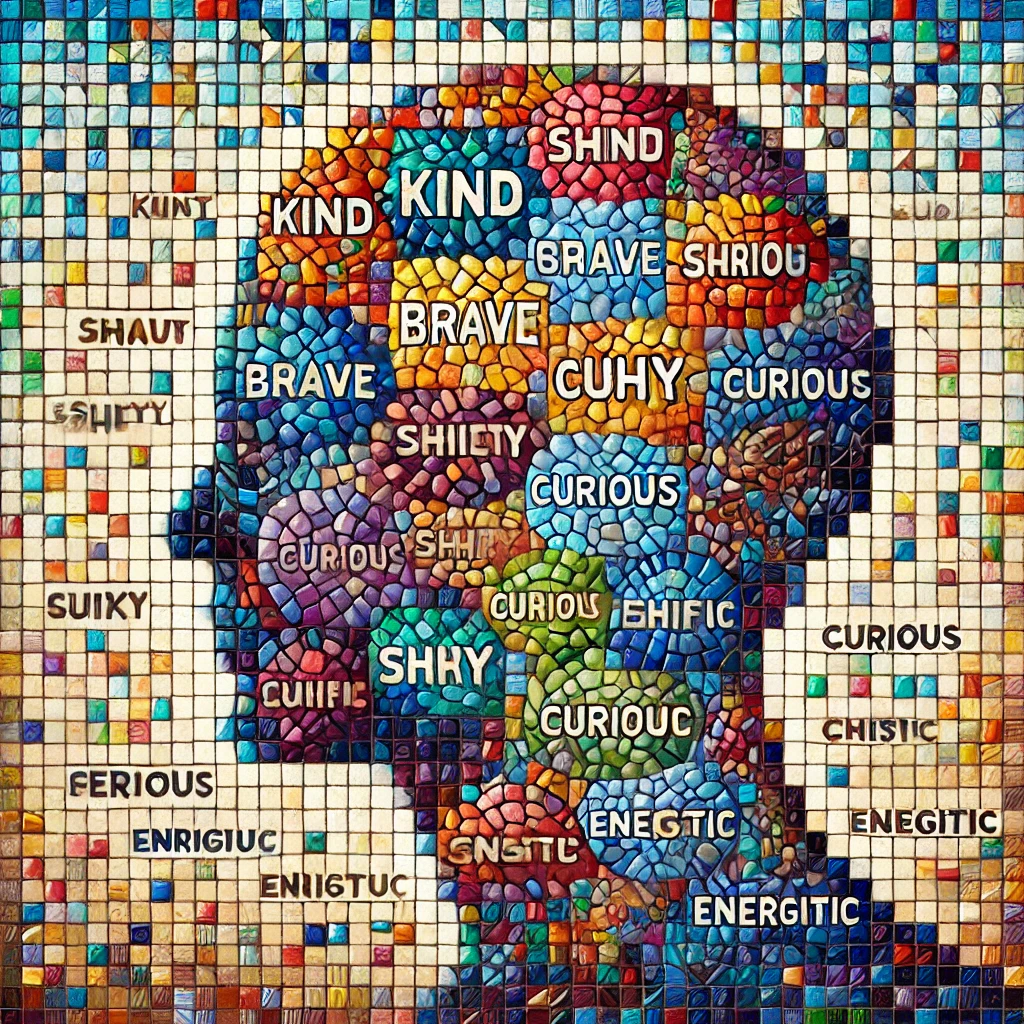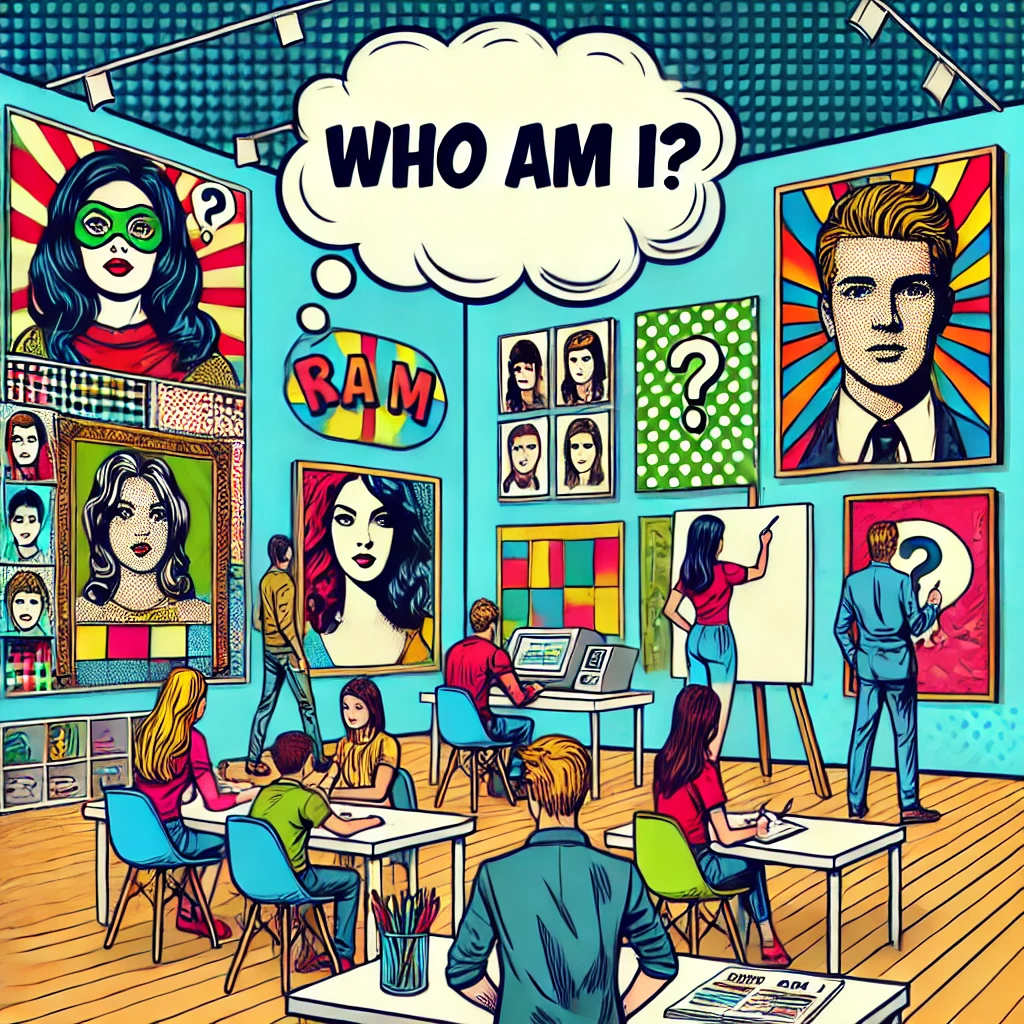
Objectives:
- Expand Vocabulary: Broaden your understanding and use of personality adjectives.
- Self-Discovery and Peer Understanding: Facilitate self-reflection and empathy by describing personal traits and recognizing those in classmates.
- Interactive Engagement: Employ interactive activities that make learning memorable and enjoyable.
- Creative Expression: creatively apply new vocabulary in various contexts.
What are Personality Adjectives?
Personality adjectives are descriptive words that are used to characterize or describe a person’s inherent traits, qualities, or behaviors. These adjectives help to provide a deeper understanding of a person’s character and are often used to express judgments, perceptions, and opinions about others.
Why Use Personality Adjectives?
- Descriptive Precision: They allow you to describe people more precisely.
- Enhanced Communication: Improve your ability to communicate your thoughts and observations about others.
- Literary Enrichment: Enrich your writing by adding depth to characters in stories.
- Social Interaction: Facilitate social interactions by understanding and discussing different personality traits.
Types of Personality Adjectives
Personality adjectives can be broadly categorized into positive and negative traits.
Positive Personality Adjectives
- Ambitious: Having a strong desire for success or achievement.
- Compassionate: Feeling or showing sympathy and concern for others.
- Diligent: Showing careful and persistent effort in work or duties.
- Generous: Willing to give more of something, such as money or time, than is strictly necessary or expected.
- Gregarious: Fond of company; sociable.
- Optimistic: Hopeful and confident about the future.
- Resilient: Able to withstand or recover quickly from difficult conditions.
- Sincere: Free from pretense or deceit; genuine.
- Sympathetic: Feeling, showing, or expressing sympathy.
- Versatile: Able to adapt or be adapted to many different functions or activities.
Negative Personality Adjectives
- Arrogant: Having an exaggerated sense of one’s own importance or abilities.
- Impulsive: Acting or done without forethought.
- Pessimistic: Tending to see the worst aspect of things or believe that the worst will happen.
- Stubborn: Having or showing dogged determination not to change one’s attitude or position on something.
- Tactless: Having or showing a lack of skill and sensitivity in dealing with others or with difficult issues.
How to Use Personality Adjectives
- In Descriptions:
- Simple Sentences: “She is ambitious and always sets high goals for herself.”
- Compound Sentences: “He is gregarious, and he loves attending parties.”
- In Comparisons:
- Comparative Forms: “She is more diligent than her brother.”
- Superlative Forms: “He is the most generous person I know.”
- In Contexts:
- Stories: “The protagonist was a resilient woman who overcame many obstacles.”
- Dialogue: “John, you are so compassionate; I appreciate your help.”
- In Judgments and Opinions:
- Positive: “I admire how optimistic she is about the future.”
- Negative: “His arrogant attitude makes it difficult to work with him.”
- In Professional Settings:
- Resumes: “A diligent and versatile professional with a proven track record.”
- Performance Reviews: “She is a sincere and compassionate team member.”
- In Social Interactions:
- Compliments: “You are very thoughtful to bring me this gift.”
- Constructive Criticism: “Sometimes, being a bit less stubborn might help you see other perspectives.”
Warm-Up Activity
Personality Adjective Match (15 minutes)
Objectives:
- Expand Vocabulary: Learn and reinforce a wide range of personality adjectives.
- Enhance Understanding: Understand the meanings and appropriate usage of different personality adjectives.
- Apply Knowledge: Match personality adjectives to their corresponding definitions or scenarios.
- Activate Prior Knowledge: Recall and apply previously learned vocabulary in a fun and interactive way.
Instructions:
- Preparation:
- Materials: Create two sets of cards – one set with personality adjectives and the other with corresponding definitions or scenarios.
- Setup: Display the adjectives on one side of the board and the definitions or scenarios on the other side.
- Activity (10 minutes):
- Introduction: Briefly explain the purpose of the activity and review a few examples of personality adjectives with the class.
- Matching Game: You will work in pairs or small groups. Each group will be given a set of cards with adjectives and another set with definitions or scenarios.
- Task: Match each adjective to its correct definition or scenario. Discuss within your group why each match is appropriate.
- Class Review: After completing the matching task, we will review the answers together as a class. You will explain your reasoning for each match.
- Discussion (5 minutes):
- Sharing: Share some of the matched pairs with the class. Discuss any challenging adjectives and why certain definitions or scenarios fit best.
- Clarification: Your teacher will provide additional explanations or examples if needed to ensure clear understanding.

Main Activities
Personality Mosaic (15 minutes)
Objective: Create a visual representation of your personalities using the newly learned adjectives.
Activity: Select personality adjectives that you feel represent yourselves and create a “Personality Mosaic” on paper or digitally. You can illustrate or decorate your mosaics to reflect the meaning of the adjectives.
Personal Interest Integration: Incorporate your hobbies, favorite books, movies, or songs as examples or themes in your mosaics to personalize their work.
A Personality Mosaic is a creative and visual representation of an individual’s personality traits using a combination of words, images, colors, and sometimes textures or materials. It’s a form of art that captures the complexity and multifaceted nature of one’s character by piecing together various personality adjectives and related imagery to form a cohesive whole. The concept aligns with the understanding that personality is not one-dimensional but a blend of many different attributes, much like how individual tiles or pieces come together to form a mosaic.

‘Who Am I?’ Interactive Gallery Walk (20 minutes)
Objective: Use personality adjectives to guess classmates based on descriptive paragraphs.Activity: Each student writes a short paragraph describing themselves or a fictional character using the adjectives learned. Paragraphs are displayed anonymously around the room. Students walk around, read the descriptions, and guess who or what is described.Gamification Element: Use “Krugs” as a reward for correct guesses and insightful descriptions, encouraging thoughtful participation.

